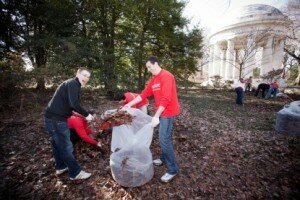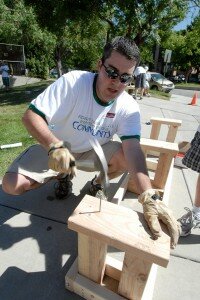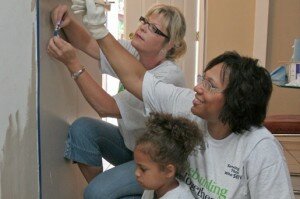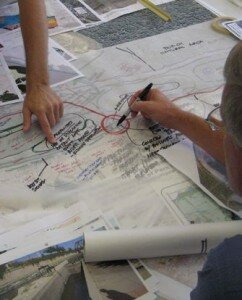![06.22.10.Group shot[small]](/wp-content/uploads/2010/06/06.22.10.Group-shotsmall-300x190.jpg) The idea of planning a volunteer project can be daunting! With all of the step involved, be sure to take time to visit the potential project site to determine the greatest needs. Whether you are working at a shelter, a park or a community service organization, a site visit will help you identify potential projects and ensure your project runs smoothly.
The idea of planning a volunteer project can be daunting! With all of the step involved, be sure to take time to visit the potential project site to determine the greatest needs. Whether you are working at a shelter, a park or a community service organization, a site visit will help you identify potential projects and ensure your project runs smoothly.
Here is what you should accomplish during the site visit:
- Verify directions. As you drive to your initial site visit, take note of the driving directions that were given to you. Make sure that they are accurate, as you may need to provide driving directions to volunteers.
- Learn about the organization’s needs. During the site visit, ask questions that will help you understand what the organization’s greatest needs are and the ways that ongoing or one-time volunteer support can have the greatest impact in meeting those pressing needs.
- Begin planning. Discuss possible project opportunities with the agency or school. What projects can you work on together? What goals do you both wish to accomplish within the community?
- Identify tools and materials needed. Brainstorm with the agency or school about the types and amounts of materials that will be needed to complete prospective projects. Also, discuss how the organization has secured tools and materials in the past. Can they provide any of the materials needed? Do they currently have partnerships with that provide in-kind donations for project materials?
- Confirm the organization’s involvement and participation. Determine the type of participation you can expect from the organization during projects. Will they have supervisors and potential volunteers to work with you at the project? What will their level of involvement be? Are they donating any materials or services? Will they speak to volunteers before or after projects? In addition, discuss how they have recruited volunteers in the past.
- Create backup plans. Identify projects that can be expanded or reduced based on weather, volunteer attrition or other unforeseen circumstances.
- Become familiar with the site and its amenities. Important details about the site should not be overlooked, including accessibility to water (for clean up or drinking), restroom facilities, adequate parking, first-aid kits and the nearest hospital.
What do you like to focus on during site visits? Let us know in the comments below!

 community?
community? of getting the word out and who needs to be contacted.
of getting the word out and who needs to be contacted.



 Today’s post comes from Laura Rog, Director of Training and Technical Assistance with
Today’s post comes from Laura Rog, Director of Training and Technical Assistance with  Obviously, we all want our service projects to be nice. We want youth to have fun and be excited about what they do.
Obviously, we all want our service projects to be nice. We want youth to have fun and be excited about what they do. Establishing goals at the onset of your group project, allows for you to measure the outcomes of your project. Consider these questions: Is there a current event that has emotionally affected you or might have emotionally affected others around you? What change would you like to see in your community?
Establishing goals at the onset of your group project, allows for you to measure the outcomes of your project. Consider these questions: Is there a current event that has emotionally affected you or might have emotionally affected others around you? What change would you like to see in your community? Find volunteers or contact other local nonprofits that can help provide volunteers. If your project is important to the community, you will find many people eager to be involved. Place flyers at your local post office, park, grocery store, school, community bulletin boards. Volunteer recruitment will also help make people aware of your group project. Social media outlets will also help with volunteer recruitment. Websites such as , , , and a personal blog can easily reach a wide range of people.
Find volunteers or contact other local nonprofits that can help provide volunteers. If your project is important to the community, you will find many people eager to be involved. Place flyers at your local post office, park, grocery store, school, community bulletin boards. Volunteer recruitment will also help make people aware of your group project. Social media outlets will also help with volunteer recruitment. Websites such as , , , and a personal blog can easily reach a wide range of people. Remember to thank your volunteers! Thank your volunteers so that they can feel appreciated and want to volunteer for future projects. Whether it’s a hand-written note filled with a simple message and encouraging words or talking to your volunteers individually-thank them! If you’re not quite sure how, we have
Remember to thank your volunteers! Thank your volunteers so that they can feel appreciated and want to volunteer for future projects. Whether it’s a hand-written note filled with a simple message and encouraging words or talking to your volunteers individually-thank them! If you’re not quite sure how, we have 
